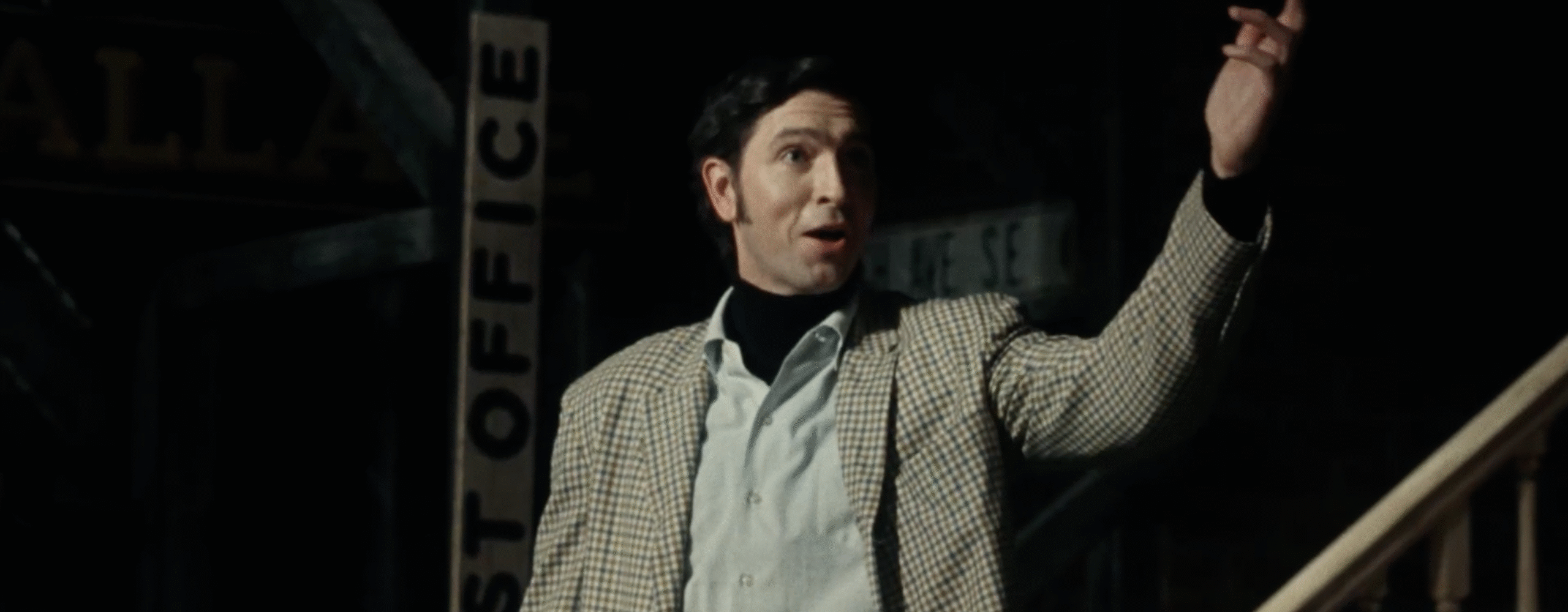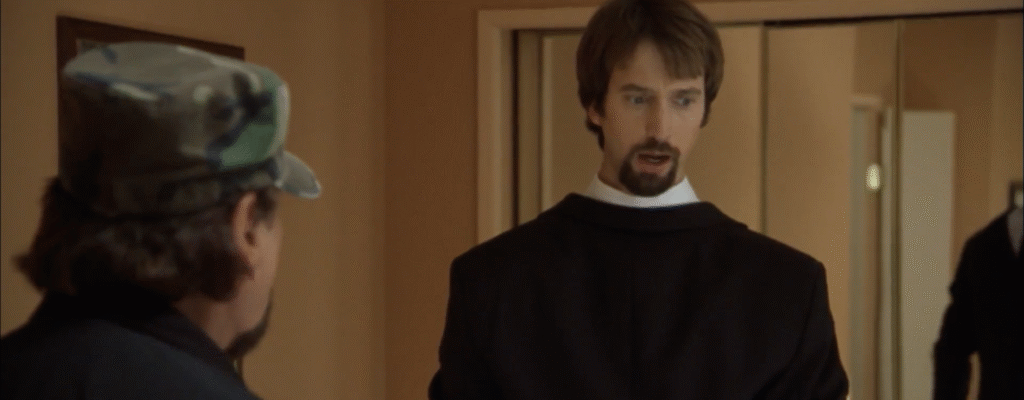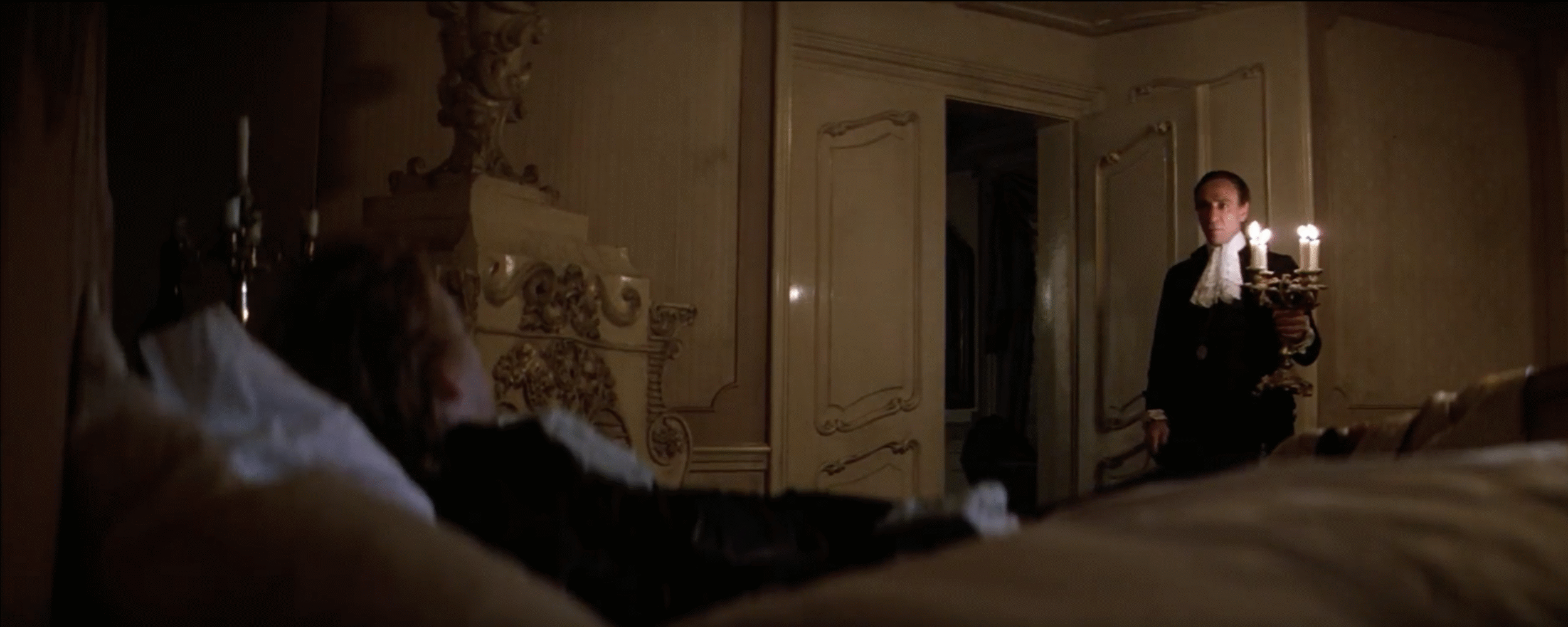Anti-comedy, by its own nature, is an alternative type of humour that purposely undermines the natural structure of comedy to create humour from doing the opposite of expected. It subverts the audience by leaving them bereft of any discernible punchline to a joke. Instead the awkwardness is what generates the laughter, its funny by its absurdist nature where you have to be ‘in on the joke’ to be part of the crowd.
Its isn’t something that is new either. Andy Kaufman is one of the first who uses this type of comedy. His live sets in the 1970s, along with his appearance on Saturday Night Live, were more performance art then straight comedy. He would never be telling jokes, he would create different personas of himself along with other characters, the laughter came through comic timing and the awkward way in which he’d deliver the comedy routines. Recently enough, Andy Kaufman was portrayed in the film Saturday Night (Reitman, 2024) about the opening day of SNL. It included his ‘Might Mouse’ sketch which leave the audiences waiting for a punchline, then when it comes its from his awkward nature in miming to the music being played. He subverts the audiences expectations and delivers the laughter through comic timing and unique character style.
Recently, comedians have carried on this comedic style, especially in a post modern world where irony is nothing new in the artistic world. The latest in that list to come to notoriety is Tim Robinson who’s recent film Friendship (DeYoung, 2024) I have reviewed for this website. It includes many elements of anti-comedy and I will highlight here how it creates an anti-cinema style in itself. I will also include in this article other films from the past 25 years that have managed to deliver in the same way.

Saturday Night (Reitman, 2024)
Friendship (DeYoung, 2024)
Tim Robinson has a comedic style where gestures and expression is key to his performance, along with line delivery. It is a certain style reminiscent of the silent era of filmmaking that can generate laughter not just by the words on screen but how the actors react to their scenery and express emotion through their presence on screen. Robinson creates an over the top version of himself in the character he portrays. In a comedy it is normal for an overreaction to normal situations but here he – just like Kaufman – delivers in a such a straight fashion and prolongs the joke until it until the awkwardness becomes too unbearable.
To make the distinction between anti-comedy and normal comedy, it also relies heavily on the environment more or less encouraging their irrational behaviour rather than commenting on it. Robinson’s character, along with his friend in the film Austin (Paul Rudd), have a great comedic chemistry as Austin treats Robinson’s character with openness at the start until it all starts to collapse around him.
Robinson’s character early on delivers on the comedy because it is funny to see how their friendship – acted like their a married couple while he ignores his wife at home- plays out. It feels like his own fantasy of what his friendship would be. Therefore, this is where the anti-comedic background plays a role in the success of the film. You need to understand Robinsons mannerisms and understand his comedic style to understand why this may be funny, where many individuals may just see it as irrational reactions or too humourless.
Most anti-comedies also rely on the unravelling of the main character, their downfall is what drives the film. They create an exaggerated version of their own self that they are happy to show not in the best light, they don’t mind giving themself a bad image or an unhappy ending as this in itself is what the audience will find funny: the anti-happy ending. In this film his relationship with his wife starts to fall apart, and more importantly to him his relationship with his friend falters as well. It leads to his downfall and furthering his over-exaggerated reactions to the world around him.
Freddy Got Fingered (Green, 2001)
Freddy Got Fingered is my next and earliest example of anti-comedy being used in a film. It approaches with more of an absurdist take on a comedic film, his reactions to every day occurrences are so heightened that they are very detached from a normal individual. This is also personified by the supporting cast who join in with these heightened emotions rather than in Friendship where they act as more of a grounding to the main characters actions.
The way in which the supporting characters react to the main character give the film a feel more of a spoof movie than any other sub-genre of comedy. They seek to highlight the tropes of the genre and create comedic elements through the connection between audience and character that breaks down and satirically pastiches filmmaking as a whole. I see this film as more of an anti-comedy rather than a spoof film because a spoof will take inspiration from a genre of filmmaking, whereas here it is poking fun at filmmaking as a whole. It satirises and creates irony from the norms of mainstream films (just like anti-comedy does with the norms of comedy) where the audience that ‘gets it’ can also be in on the joke along with the story makers. Anti-comedy relies on you understanding it on a deeper level to find it funny. Also, just like Friendship, the film isn’t about the main character coming across well in the film. In fact an anti-comedy only really works with an anti-hero.

Freddy Got Fingered (Green, 2001)
The Comedy (Alverson, 2012)
This film has the elements of the all the anti-comedies listed here, most importantly it takes a comedian known to the genre then puts him in the environment of a film where his main role isn’t to be liked by the cast and mainstream audiences alike. This film however takes this to its fullest extent, it includes a main character in Swanson (Tim Heidecker) who throughout holds racist views and isn’t challenged by other characters on his bigoted beliefs.
For people who already know Tim Heidecker’s work, he is known for his anti-comedy style and creating an alter-ego of himself when on screen. Therefore, to cast him in a film which includes moments of comedy, and also him acting as himself like in most other roles he plays, it is quite a shock when he starts to be a racist character in this film. This isn’t to say having a main character in a film can’t be bigoted where a film is more a social study that explores like dark underpinnings of human emotion. When there is a distance between audience and character, this is when these beliefs are allowed to enter the thoughts of a main character in the film. You watch to study human behaviour and cinema that tells a story – in this case being an individual who also feels detached from society and uses comedy to try and mask this. This challenges our beliefs in two ways: firstly the character is detached from society and we also feel detached from the character so there is little room to feel any empathy for him, and also his comedic background challenges us in to wether we should find anything he does as funny in the film.
We can therefore class the film as an anti comedy because it includes a comedic actor in the starring role that uses comedy in the film, however the way in which it is delivered is different from the norm and challenges our beliefs. It doesn’t condone his racist thoughts, but allows the audience to see the character as racist rather than being told that it is the case through dialogue. He isn’t a successful individual, comedy cant hide how he can’t find a close human connection with anyone and struggles to be happy throughout. It relies on the deeper understanding between audience and film key to the anti-comedy, you don’t connect with the characters on a personal level but understand the irony and undermining normal cinematic/societal tropes it is trying to achieve.

The Comedy (Alverson, 2012)
It is hard to analyse anti-comedy without getting philosophical as it is trying to break down the foundations in which societal norms are built on and poke fun at it. In this way it therefore relies on a certain amount of exclusivity for it to work. The audience finds it funny because of how it subverts generic tropes and therefore if anti-comedy was the norm, it wouldnt have anything to subvert against
You need to be in on the joke to get it, be it either knowing the comedian before watching the film or understanding how an anti-comedy functions. The audience guides its own beliefs rather than being guided. The films puts enough trust in its audience to understand its nuances and beliefs, rather than telling the audience the way it should be perceived. One thing that stands out more than anything else, the main character creates their own downfall by the end and even the structure of normal filmmaking comes into question in the anti-comedy.

